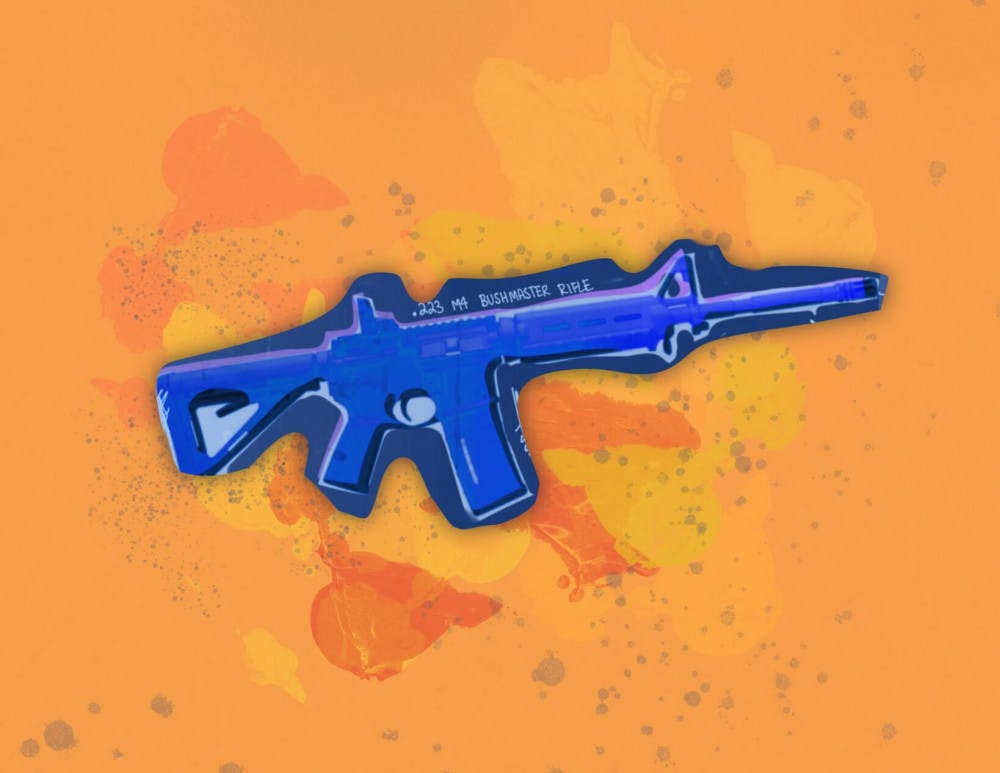
Students, faculty and community members have called for UPD to demilitarize and disband the unit that shot Kofi Adu-Brempong.
A UF graduate student was shot in the head by University Police in his own on-campus apartment.
A decade later, UF faculty said the incident still makes them feel unsafe in their workplace. They’re asking UPD for a change.
In March 2010, a UPD officer shot Kofi Adu-Brempong, a graduate student from Ghana, while responding to a call from an on-campus resident who reported screaming coming from another dorm. Adu-Brempong survived the shot to the face by police, but suffered permanent damage to his jaw and the roof of his mouth as a result.
Since the incident, students, faculty and community members have called for UPD to demilitarize and disband the unit that shot Adu-Brempong. Recent events, including nationwide protests against police brutality and systemic racism, have brought more attention to Adu-Brempong’s case and reignited conversations about reforming University Police.
Malini Schueller, a UF English professor since 1986, directed “In His Own Home,” a documentary about the 2010 shooting of Adu-Brempong and the protests that consumed Gainesville in its aftermath.
Schueller said it’s frightening that military-grade weapons like assault rifles are used by campus police in the first place. They should not have had the power to burst into a student’s home and shoot him in the face, she added.
Adu-Brempong deserves justice, she said. To her, that means holding the UPD team involved responsible – the Critical Incident Response Team (CIRT), a unit that responds to high-risk emergency situations.
When asked what gear and weapons the CIRT team uses, Hessy Fernandez, director of UF Issues Management and Crisis Communications, wrote in an email to The Alligator that UPD CIRT members have access to the “gear and weapons necessary to respond to high hazard situations,” including armed and dangerous people on campus. She did not specify which weapons or gear the team uses.
There are currently 14 officers serving on the UF CIRT team. Each officer must complete 144 hours of training annually in addition to regular police training in order to be on the team, Fernandez wrote.
When asked for comment, UPD Spokesperson Brad Barber redirected The Alligator to UF Spokesperson Steve Orlando, who referred The Alligator back to Fernandez.
UPD officers, including CIRT members, are required to complete the same training as any other law enforcement officer in Florida, Fernandez wrote. Prior law enforcement experience is not required to be an officer on campus.
The difference in training between a regular UPD officer and a member of CIRT is the addition of a 12-hour training day each month, which is mainly focused on how to respond to active shooter situations and victim rescues, and any additional training the university or UPD chooses, she wrote.
In a report by UPD, they described the 2010 shooting of Adu-Brempong as the “most notable Use of Force incident in the history of the Department.” After a 90-minute standoff outside, the team, including multiple CIRT officers, entered Adu-Brempong’s apartment and saw him holding a table leg, the Tampa Bay Times wrote.
Footage of the incident shows officers speaking with Adu-Brempong through his window before bursting through his door.
Officers used a taser, a less-lethal shotgun which does not penetrate the body and is designed to cause minimal trauma, also referred to as a bean bag, and a .223 M4 Bushmaster rifle on Adu-Brempong after he reportedly threatened officers, according to the UPD report. The same UPD report also misspells Adu-Brempong’s name.
After an internal investigation, UPD said in August 2010 that they mishandled the incident and were in violation of three UPD policies. One violation stated the situation did not warrant the use of CIRT.
Adu-Brempong was displaying symptoms of mental illness, so another violation stated that the UPD and CIRT teams were neglectful by not using their Crisis Intervention Team, a team trained to deal with situations involving mental health. Lastly, the commanding officer the night of the incident should have provided information about the scene to the assistant director for patrol and the police chief so they could have critically assessed the situation.
One of Schueller’s colleagues, Peter Rudnytsky, a UF English professor, said the money spent on the CIRT team could be used for more mental health services for students or additional training for officers to take action in order to prevent another incident, he said.
CIRT officers receive the same mental health training as regular police officers, which includes a 40-hour crisis intervention course during their basic training, Fernandez wrote. The team costs UPD about an additional $5,000 annually, which accounts for the cost of the ammunition they use in training, she wrote.
Schueller created a petition June 10 asking UF to disband CIRT. The petition has received 320 signatures as of Saturday morning, and has been posted on multiple Facebook groups including Chispas UF and the GoDDsville Dream Defenders.
Schueller’s petition also says there is a racist history behind militarized police force, citing violent Civil Rights protests in the 1960s.
“A militarized police force combined with systemic racism (that we cannot simply wish away) will always be toxic,” the petition said.
Rudnytsky said there was a certain level of unconscious bias and implicit racism that contributed to the tragic outcome of the incident and called for more training for police officers in those areas as well.
According to an Alligator analysis of UF Alerts between 2018 and 2020, there were about three times more alerts issued about Black suspects than white suspects.

Barber did not specify whether UPD sends out alerts based on every tip it receives.
In a message from the UPD Chief Linda Stump-Kurnick on the UPD website, she stated the UPD campus law enforcement team is “progressive.”
“The CIRT team is not progressive,” Rudnytsky said. “That is the most anti-progressive type of law enforcement.”
No one should be able to go into someone’s apartment like that on a college campus, Schueller said — especially with that kind of force.
Gainesville Police and Alachua County Sheriff's Office are nearby if that level of force is needed, she added.
The university now has the opportunity to make the changes it failed to make more than a decade ago, in order to make a positive effect on the faculty and students, Rudnytsky said. He said that now is a time of action.
“We are able now, with a greater awareness of the problem, to reevaluate how we as a campus want to protect ourselves,” he said.





